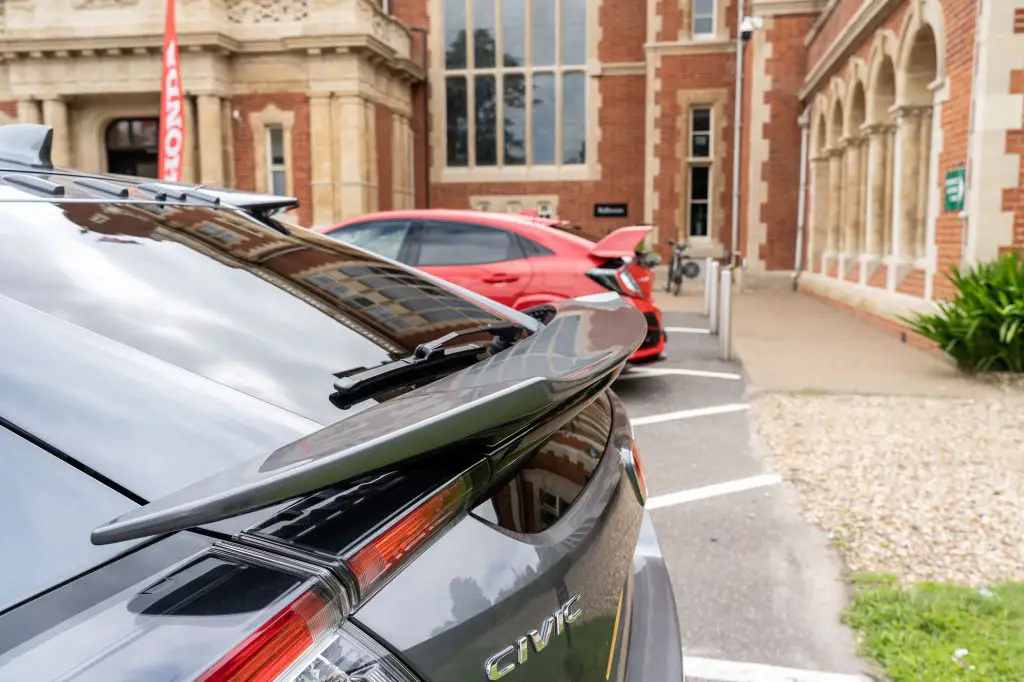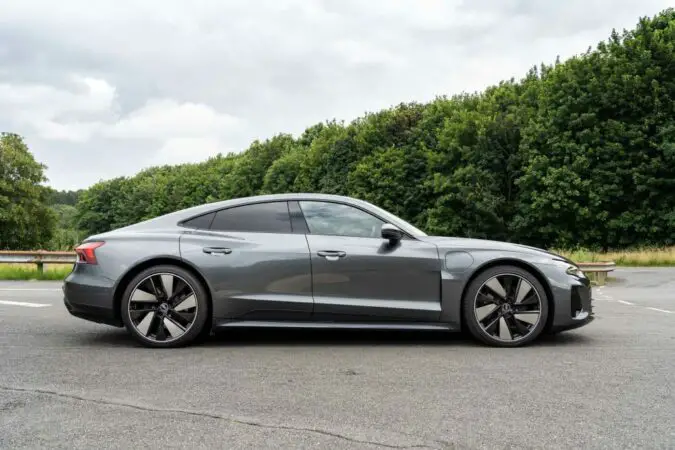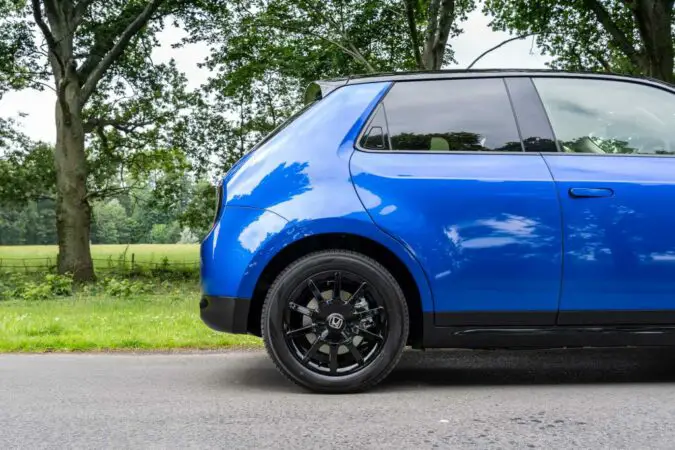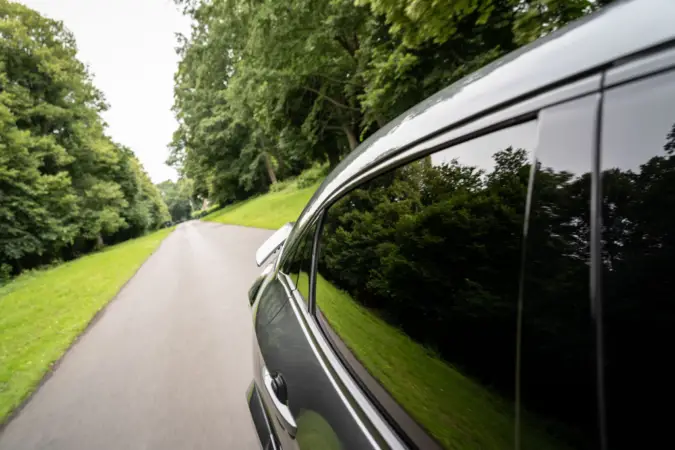There are a few different grades and materials available for window tinting. Some window tints only serve to improve the car’s appearance. Some other, higher-grade tints serve a considerably wider range of purposes. One such material is a ceramic tint, but how much does ceramic tint cost, and is paying the higher price for it worthwhile?
Anyone who has seen a car with tinted windows understands how it elevates the driving and traveling experience. Tinted car windows offer a number of advantages, including protection from harmful UV rays. They also help conceal items within your vehicle and give you an unbeatable sense of added privacy and security.
You definitely have a lot of questions if you’re becoming more and more interested in a ceramic window tint for your car. The price of ceramic window tint is among the most often asked questions. Automotive upgrades are relatively expensive, hence this article will cover all the details of ceramic window tint pricing.
- Tint Percentages
- Ceramic Tint Vs Regular Tint
- Ceramic Tint Cost
- Nano Ceramic Tint
- Carbon Ceramic Tint
- Best Ceramic Tint Options
- Conclusion
- FAQ
Ceramic Tint
Ceramic tint is a cutting-edge window tint created for optimal heat and UV protection. There are some key distinctions between it and a standard, entry-level window tint. The main one is how well it blocks sunlight, solar heat, and UV rays.
In comparison to “normal tint,” usually referred to as regular dyed window tint or, in this case, “cheap tint,” ceramic tint can typically block 2 to 3 times more heat. The multiple layers of ceramic window tint are intended to deflect the sun’s harmful UV radiation.
According to Autotrader, nanotechnology incorporates microscopic ceramic particles within the layers of ultra-thin film. This gives ceramic tint its capacity to accomplish this feat. It’s simple to understand why the ceramic tint is worth the extra expense as most tint makers claim that this specific film can filter up to 99.9% of UV rays.
Ceramic Tint Percentages
You have a variety of alternatives when it comes to auto window tinting, ranging from 5 percent to 90 percent. The percentages represent the amount of visible light that can pass through the windows a.k.a visible light transmission, or VLT. This implies that the color will be darker the lower the proportion.
VLT
The majority of vehicles don’t have totally clear glass out of the box. Actually, they are almost all over 80% VLT. Therefore, you must take this into account when estimating how much light actually passes through.
For instance, you would need to multiply the two amounts if you wanted to add a 5 percent tint to glass that already had an 80 percent tint (5% x 80% = 4%). In other words, the car would have a cumulative VLT of 4%.
If this seems overwhelming, don’t worry. Most window film professionals can estimate how much of your car’s windows are tinted simply by looking at them. This is the result of years of practice.
You may simply ask them to measure it with a gadget akin to the ones police officers use to find out for sure. You can rely on this to provide you with a reading that is incredibly accurate. Here are some of the most popular window tints along with their advantages and disadvantages.
50 Ceramic Tint
A 50% tint is a fantastic choice for you if you’re not seeking complete blackness. Even though it only filters out half of the light that enters your automobile, it is still excellent in blocking out heat and UV rays. Driving becomes significantly safer as glare and eye strain are also reduced.
35 Ceramic Tint
A vehicle with a tint of 35% will appear darker and more opaque to you, but it will still be extremely clear to see out of. This shade is popular because it gives off a polished, fashionable appearance.
15 Ceramic Tint
You might want a 15% tint if you’re worried about privacy. It’s challenging to see through it from the outside, even if you’re close. Most casual snoops and would-be crooks will be discouraged by this.
5 Ceramic Tint
You can’t see through anything that has a 5 percent tint since it is so dark. Despite being unlawful in the majority of states, this is frequently utilized on the back windows of limos.
Ceramic Tint Vs Regular Tint
Let’s look at the fundamental characteristics of both of these solutions before delving into their benefits.
Regular Tint
One of the most widely used varieties of window tint is regular tint. It is sometimes referred to as “dyed film” or “standard tint.” It’s a low-cost, entry-level choice that provides a wonderful visual aesthetic and necessary, privacy. Regular tint comes in a variety of colors and looks, but most car owners prefer black color since it has a classic look.
Regular tint, commonly referred to as colored window film, is the most basic type that is offered. This dyed film that darkens the hues of your car windows is precisely what it sounds like.
You may have even seen a few of these films in your neighborhood convenience store. It comes with abbreviations like VLT 5 percent, 25 percent, or even 50 percent. Visible Light Transmission is what VLT stands for in its simplest form. These numbers show how much light can pass through different films while also denoting how black your window will appear.
A window with 70% VLT, for instance, may appear to be very light, but a window with 5% VLT will appear to be very dark. Your film will be more or less transparent depending on the number; the greater the number, the more transparent it will be.
Ceramic Tint
In contrast, ceramic window tint is a high-end window tint that has a variety of benefits over standard tint. Ceramic tint makes use of nonconductive nano-ceramic particles in place of dye. These solutions have different advantages and disadvantages because of their physical differences, which we’ll discuss below.
Longevity
Although regular window tint is less expensive than its premium counterpart, it also has a propensity to deteriorate and lose its color over time. On the other hand, ceramic window tint offers a longer lifespan to make up for its higher initial cost. This option is more durable than colored plastic or metallic tints since it resists scratches and damage better.
After staying on the car for a while, most dyed films will start to fade and turn purple. This can distort and impair the clarity of what you see through your windows.
If you hire a tint installer, they will probably bill you the same amount for labor for any type of tint. This is regardless of whether they install ceramic or carbon window tint or lower-quality window tint films. But the cost of replacement could increase in cost over time. To find out more, check out our explainer on how long does it take to tint windows.
The additional cost of ceramic window tint or carbon color stable window tint is unquestionably more worthwhile in the long run. This is considering the fact that they are long-lasting, higher-performance window tints. In addition, most installers will offer a lifetime warranty when you choose higher-quality alternatives to ordinary window tints.
UV Protection / Sun Protection
When it comes to window tint, there are some fallacies to avoid. At first glance, it can seem that the protection is increased by the tint’s darkness. This isn’t completely true because colored window films only work by obstructing UVA and UVB rays, not infrared radiation.
You might wonder why blocking infrared light through window film is so important. In addition to UV protection, infrared protection is crucial. You want a window tint grade that will keep your inside cool while also protecting you.
Infrared radiation raises the interior temperature of the cabin when you leave your car in the sun for a long time. This not only destroys the interior of your car, especially if it has leather seats, but it also fills your face with hot air when you get inside, making it uncomfortable.
Cost
Regular window tint is inexpensive, as was already indicated as one of its main advantages. It’s ideal for novice users who want to test window tints on their own cars because of this. It’s important to keep in mind that the cheap initial cost can result in higher long-term costs.
Regular window tint may require replacement on a regular basis even with skilled installation due to fading, discoloration, and wear and tear. Ceramic window tints are more expensive up front, but they can often be well worth the expenditure due to their toughness and longer lifespan.
Safety
Little can be done to prevent your automobile windows from cracking with regular window tint. As mentioned above, compared to other tinting options, this option is less robust and scratch-resistant.
On the other side, you can improve the protection of your car with ceramic window tint. This kind of tint can prevent the glass from shattering in the event of an accident. Additionally, ceramic window tint can make it much more difficult for someone to break into your automobile (or, if you want to learn how to break into your car).
How Much Does Ceramic Tint Cost
Ceramic window tint deserves the additional price because it is the best available film without any metals or dye. Phone signals, radio signals, and other technologies are not obstructed by the non-metallic and non-conductive ceramic particles.
In addition, a hybrid ceramic film known as nano-ceramic exists. It is an improved ceramic tint with additional advantages, such as heat resistance and rejection.
The cost of nano-ceramic window tint is also increased due to its elevated visibility. By doing this, any mishaps brought on by a window tint that is too dark are avoided. You’ll adore the fact that ceramic tint cools your entire automobile, which means you’ll require less air conditioning.
For about $400 for three windows, ceramic automobile window tint offers all the advantages listed above. Despite the fact that this may seem like a significant financial commitment, the immediate and significant change is worth it.
Ceramic Reflective Tint
The entire car can be updated with reflective window films. This is especially helpful if you have an outdated older vehicle that could use an upgrade.
You may customize the look of your car by choosing from a choice of finishes and reflectivity levels for reflective ceramic tint. For instance, a glass with a high degree of mirror-like reflectivity can reflect its surroundings. This gives it a sleek, contemporary, or even futuristic appearance.
Reflective ceramic window films provide a number of performance advantages for the windows of your car in addition to their attractive qualities. Reflective window films have the ability to block out a significant portion of infrared light, which is light that you feel rather than see.
The term “solar heat gain” refers to the heat that enters a car through windows and raises the temperature inside. Reflective window tinting film can reject a significant portion of solar heat gain. It does it by reflecting the heat back outwards, as opposed to just letting it pass through like regular windows.
Nano Ceramic Tint
The manufacturing process is the main distinction between nano-ceramic tints and other types of tints. Each and every windscreen film has two layers of polyester sheets. However, the substance separating the two layers varies. To create ceramic tint, a variety of goods, including dyes, metals, and hybrids of the two, can be combined with polyester.
99 percent of the sun’s dangerous UV and a significant percentage of its warming IR rays are rejected by nano-ceramic window tint. It accomplishes this without obstructing or decreasing the visibility or the signals sent or received by radios or phones.
Signals from cellular, satellite, GPS, and terrestrial services may be hampered by materialized window tints. Nano-ceramic tints won’t likely interfere with signals in your car because they don’t contain any metallic components. As a result, it is a practical solution to maintain vehicle comfort without sacrificing user experience.
Nano-ceramic tints block out solar rays to prevent fading and degradation of your car’s interior. Additionally, it shields you from sun harm. Nano-ceramic tints are a proprietary technology that can ensure UV protection while keeping visibility intact. They reduce glare when driving by only letting in 5 to 50% of sunlight.
Additionally, nano-ceramic window tints offer cutting-edge technology that can block up to 80% of the sun’s harmful rays. Since the fabric doesn’t contain any dye, it won’t likely fade with time. Cost-wise, nano-ceramic window tint is just 20% more expensive than colored tints. You can also have the privacy and security you require with tinted glasses.
The fact that nano-ceramic window tint cannot darken your windscreen is one of its intriguing characteristics. Because ceramic tints prevent as much heat from entering the interior, your car will always feel cozy and cool.
Carbon Ceramic Tint
One of the most modern varieties of vehicle window film is carbon ceramic tint. It offers many of the advantages of nano-ceramic tints. It is not bright or reflective like metallic films, and it does not obstruct radio, satellite, or phone communications.
However, carbon tints frequently look fairly dark and provide more shading than most people like. Additionally, these films are marginally less efficient at deflecting solar heat than ceramic tints.
Dyed window film has been around for a while. However, improved options for higher-quality window tints have emerged as a result of technological advancements. The next best option is Carbon Color Stable Tint if you’re searching for a more useful and effective heat rejection tint that won’t fade.
Carbon Color Stable Tint is your next best choice if you’re seeking a tint with higher heat rejection capabilities. In comparison to dyed window film, carbon color stable tint is regarded to be a higher grade film in terms of heat rejection and protection.
The ability of Carbon Color Stable Tint to resist sun fading and degradation is one of its most crucial qualities. Up to 70% of infrared heat can be blocked with KAVACA carbon color stable filters, which also shield you and your passengers from 99.9% of UV radiation.
Ceramic Tint Vs Carbon Tint
Your preferences ultimately determine the choice. A carbon or metalized window tinting film will do if you wish to attain good levels of heat rejection while saving money. However, the price difference is only a few hundred dollars. Therefore, despite the slightly higher cost of a ceramic window coating, the advantages in terms of heat rejection, UV ray protection, and sun glare reduction are substantial.
Best Ceramic Tint
MotoShield Pro Premium Precut Ceramic Kit
With this precut kit of ceramic film from MotoShield Pro, you can tint your windows quickly and easily without sacrificing durability. With the help of ceramic nanoparticles, this sturdy 2-mil film can block up to 99 percent of UV and infrared radiation. It efficiently protects the occupants and interior while also preventing extra solar heat from entering.
There are several colors available, ranging from 5 to 75 percent VLT (visible light transmission). There are numerous variants available for trucks, minivans, SUVs, and cars. Costing around $50, a 10-foot roll of 20-inch film.
Motoshield-Prograde-Premium Infrared Heat-Reduction Nano Ceramic Tint
Here is yet another fantastic item from Motoshield. The product is environmentally safe thanks to its exquisite design and nonmetallic, nonconductive nano-ceramic construction. This model may be the best option for you because it has a 70% glare reduction, a 99% IRR rejection, a 99% UV rejection, and a 63% TSER.
The product’s seven hues, with 75 percent being the lightest shade and 5 percent being the darkest, are its most appealing feature. Another benefit is that since there are no metallic particles, you won’t have the issue of dropped connectivity.
On Amazon, it costs between $270 and $300 for a 10-foot roll of 20-inch film but various lengths and widths are also available. You can also purchase a professional 100-foot roll of 20-, 40-, or 60-inch film if you wish to tint several different vehicles. This sturdy 2-mil film is available in a variety of tints from 15 to 75 VLT, much like the precut kits.
Lexen Max 2Ply Carbon
This window tint offers a fantastic compromise between value and cost. Embedded with small carbon particles and sold precut, the kit makes installation simpler while offering effective protection. This carbon film blocks up to 99 percent of UV rays, an increased amount of infrared radiation and heat than less expensive colored films. Additionally, it endures longer.
This two-ply, 1.5-mil film comes in a variety of colors and carries a lifetime warranty. You might need to perform the final trimming since the film could arrive chopped large with the outline of the window.
Lexen Max 2Ply Premium Carbon
Lexen’s sturdy two-ply, 1.5-mil Premium Carbon film offers excellent value that combines quality and cost, just like the precut kits. This film outperforms colored films in terms of durability and infrared radiation reflection by using minute embedded carbon particles. Additionally, it doesn’t produce the electronic interference that metallic films do.
The Lexen Max 2Ply Premium Carbon costs around $35 for a roll measuring 24 inches by 10 feet. However, it is available in a variety of widths and lengths, including 100-foot rolls priced at around $80. These tints are offered by the brand with a lifetime warranty.
How Much Does Ceramic Tint Cost: Conclusion
There is nothing better than taking a long drive while listening to your favorite music. Given that the average annual mileage for Americans is around 14,000 miles. Hence it makes sense to try to make your journeys as comfortable as possible. Window tinting is a fantastic method to improve your driving experience and dress up your vehicle.
You should consider the cost before rushing to the best ceramic window tinting shop in your neighborhood. Even though it looks more expensive than you expected, the investment will be rewarding.
FAQs On How Much Does Ceramic Tint Cost
How Much Does Ceramic Window Tint Cost
For about $400 for three windows, ceramic car window tint offers all of its advantages. Despite the fact that this may seem like a significant financial commitment, the immediate and significant change is worth it.
How Much Does It Cost To Tint Windows
Even with premium brands, window tints are not excessively expensive. The typical range for a whole car tint is $100 to $400. However, it’s better to be sincere with your budget and with yourself before making a purchase.
How Long Does It Take To Tint Windows
Depending on your type of car, the time varies. It can take two to four hours to finish a whole car. Typically, it takes a full-sized truck an hour to an hour and a half. In most cases, tinting only the front doors only takes 30 to 45 minutes.
What Is Ceramic Tint
Ceramic tint is a cutting-edge window tint created by incorporating ceramic particles into tinting film. The key distinction between it and a standard, entry-level window tint is how well it blocks sunlight and solar heat.
Is Ceramic Tint Worth It
The advantages of ceramic window tint over competing products are difficult to exaggerate. Ceramic tint performs better than normal tints in lab testing on almost all metrics. This includes glare reduction, heat absorption, UV ray rejection, and structural integrity.
How To Tint Car Windows Yourself
Although window tinting is not difficult, patience is a must. If you make a mistake, it will be incredibly challenging to get the film off. In order to avoid leaving air bubbles, you will need to have very steady hands. Therefore, it is preferable to employ a professional who will ensure that the product and their work are both covered by guarantees and warranties.





